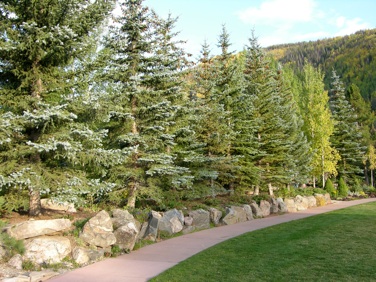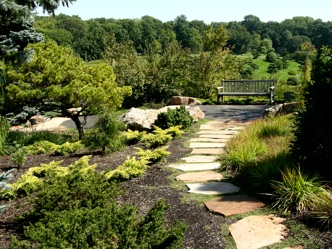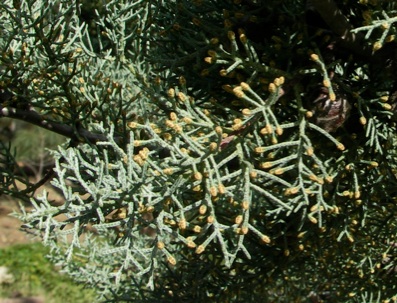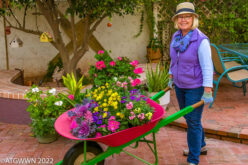Writings
Conifers will be appearing all around the town in December, though most people will call them Christmas Trees. If you go for putting a live tree on display in your home then you will likely choose between a fir, pine, cedar, spruce or cypress as these are 5 of the most popular varieties for a holiday tree. This year for the first time Arizona is providing a blue spruce for the White House National Christmas Tree. Generally for a tree to hold ornaments we want it to stand straight, be cone shaped and dark green. We are happy to tie on our own “pine cones” as part of our decorations.

Conifers are most commonly identified as a plant with needles & cones yet they are much, much more. Conifers can weep, creep, and sweep along the ground. Conifers also known as evergreens yet green is only one color in this variety of plants, there are hues of blue, gold, silver and greens in light, bright and dark.
Conifers have bragging rights as the oldest living plant known. Some of the Bristlecone Pines in the Inyo National Forest near Bishop, CA are 5000 years old. The Coast Redwood commonly called the California redwoods are the largest plant known on the planet. In the west we have a wide variety of pine trees and other conifers. We can go out in the forest and see the big specimens all around. Yet a visit to the Dwarf Conifer Garden of the Chicago Botanical Garden (CBG) is one of the best places to view the small versions of this type of plant.
The Chicago Botanical Garden covers 380 acres and has 24 formal gardens and 3 native planting areas. A dwarf conifer garden is not commonly found in public gardens and the garden in Chicago is exceptional. The conifer garden was established in 1998 and in 20 years these plants have grown into fine examples of their specimens. There are over 150 varieties of conifers.
The dwarf conifers are specimens that do not reach the typical full size of their species. The dwarfism occurs naturally due to growing conditions or mutations. In 10 years a dwarf spruce may grow only six feet. A garden of just dwarf conifers is not singular in color, shape or texture.

It would be a special treat to see this garden with snow outlining the unusual shapes of the branches though the garden is truly beautiful all year round. (Surely in winter one could see elves with red pointy hats and white beards as well.)
The conifers vary greatly in texture and feel. Living in Arizona I had to become quite cautious in reaching out to touch the leaves and petals of plants but there is much to be discovered in tactile contact with the needles of these trees. The Cypress are soft and lacy, the spruce are strong and spiky sharp, others are delicate, some are scratchy. Looking closely at the variety of patterns reveals just a portion of what is in the conifer species.
In my garden I have no variety of conifer and likely will not. I see pine trees in the neighborhood, on golf courses and I enjoy them when I go to the mountains. Recently I noticed an Arizona cypress growing near Prescott. The branches of this tree are a lacy gray green and when you look closely you see small oval gold tips on the end of each leaf. Seems like it is already decorated for the season!

originally published
@http://cals.arizona.edu/maricopa/garden/mgcentral/uploads/RSDec09.pdf

